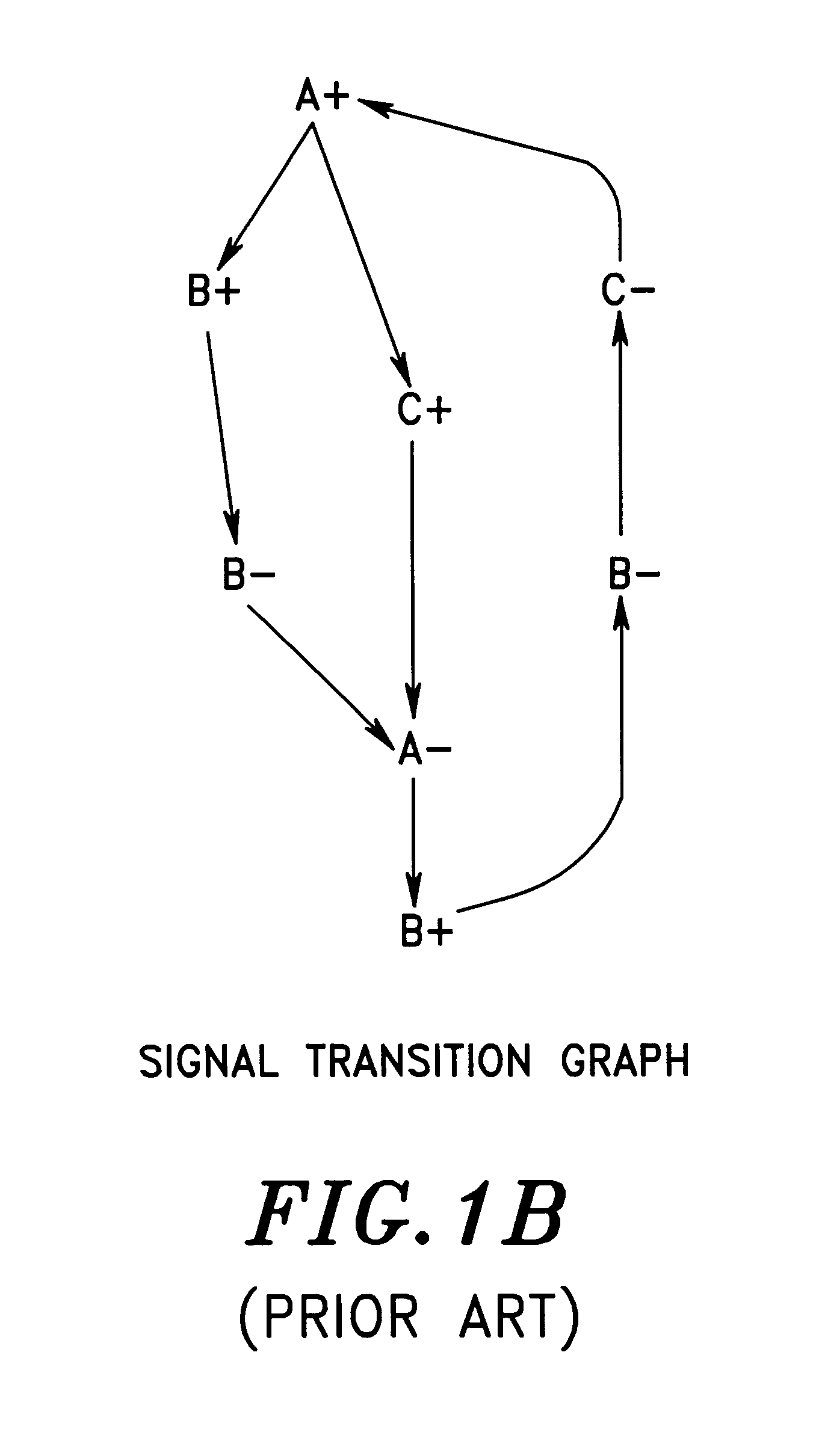System and method for generating a hazard-free asynchronous circuit
a technology of asynchronous circuit and generating system, which is applied in the direction of specific program execution arrangement, program control, instruments, etc., can solve the problems of circuits that have a wrong long-term response (races), violate the csc requirement, and always wrong long-term response circuits
- Summary
- Abstract
- Description
- Claims
- Application Information
AI Technical Summary
Problems solved by technology
Method used
Image
Examples
Embodiment Construction
In FIG. 10a two processes A and B communicate such that process A is considered as the environment and process B the circuit to synthesize. Process B has inputs a, b, and d, and output signal c. FIG. 10b is an example semi-modular state graph with input choices that shows the excitation regions of signal c for the process in FIG. 10a. The input choices at states s.sub.-- 0, s.sub.-- 1, s.sub.-- 2 are made by process A. Although states s.sub.-- 0 and s.sub.-- 4 have the same codes, their next state behavior is decided by process A (thus there is no mutual exclusion). Thus, the SG satisfies CSC. Note that state 1100 is an unreachable state.
For each approach (HC, MC, one-shot, auto_C, n-shot), a Karnaugh map is shown that demonstrates how the conditions and requirements of the approach restrict the covering of the map.
A. The HC requirement
Under the hard cube (HC) requirement, a single cube to cover the entire ON-SET space of c (i.e., fire +c) is required. FIG. 10c is an example Karnaug...
PUM
 Login to View More
Login to View More Abstract
Description
Claims
Application Information
 Login to View More
Login to View More - R&D
- Intellectual Property
- Life Sciences
- Materials
- Tech Scout
- Unparalleled Data Quality
- Higher Quality Content
- 60% Fewer Hallucinations
Browse by: Latest US Patents, China's latest patents, Technical Efficacy Thesaurus, Application Domain, Technology Topic, Popular Technical Reports.
© 2025 PatSnap. All rights reserved.Legal|Privacy policy|Modern Slavery Act Transparency Statement|Sitemap|About US| Contact US: help@patsnap.com



